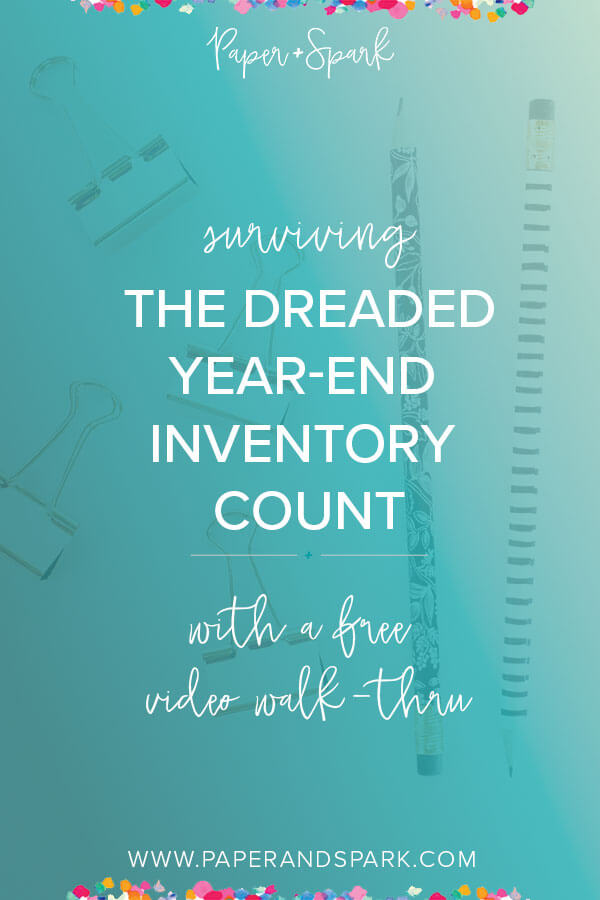
Right around the end of the year, you may start hearing a lot about counting your inventory. Today I’m hosting an Inventory Crash Course Workshop, which is my fancy way of saying I filmed a video answering the big questions I see about year-end inventory. This is my attempt to explain inventory, cost of goods sold, and the dreaded year end count in about 20 minutes (which is hard y’all!). Think of it as a “quick and dirty” summary of dealing with your inventory.
In this video, you’ll learn:
- What is inventory
- Whether you have inventory
- What is cost of goods sold
- How & where cost of goods sold is calculated on your tax return
- What inventory amounts you should be prepared to report on your tax return
- How to calculate your total inventory purchases for the year
- How to perform an end of year inventory count
I’ve got some more blog posts in the library to help you learn about inventory, COGS, and taxes:
- Inventory 101 for Makers – what is inventory?
- Inventory 101 for Makers – what is cost of goods sold?
- Catching up on your 2023 bookkeeping for taxes if you’re behind
And don’t forget – if you need more detailed help with your inventory count, check out our Inventory for Handmade Sellers spreadsheet.
If you need a little extra help & hand-holding getting caught up for 2023 and getting prepared to do your business taxes, check out the 2023 Bite-Sized Bookkeeping Bootcamp right here.

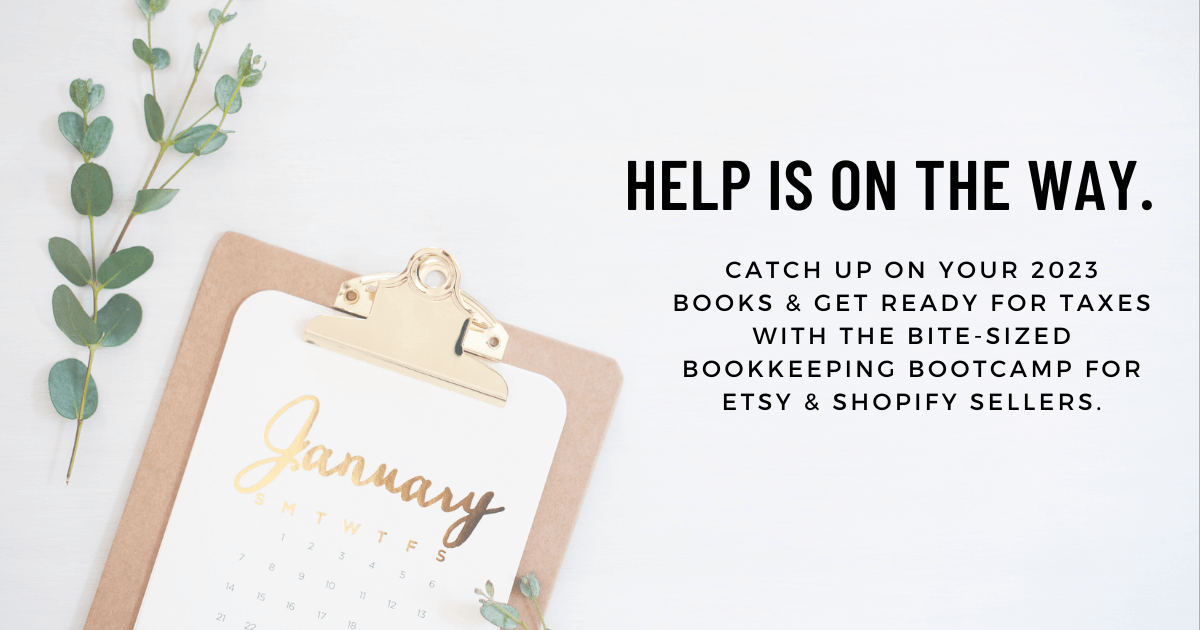
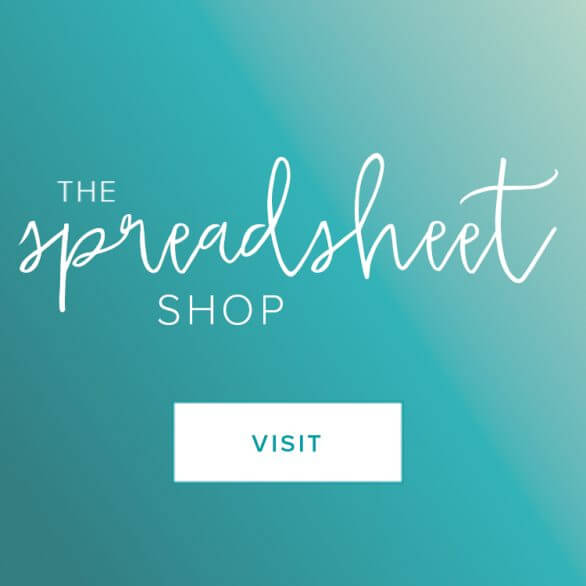

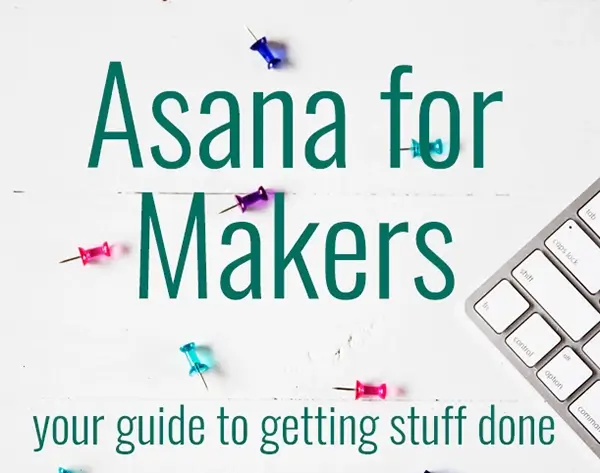
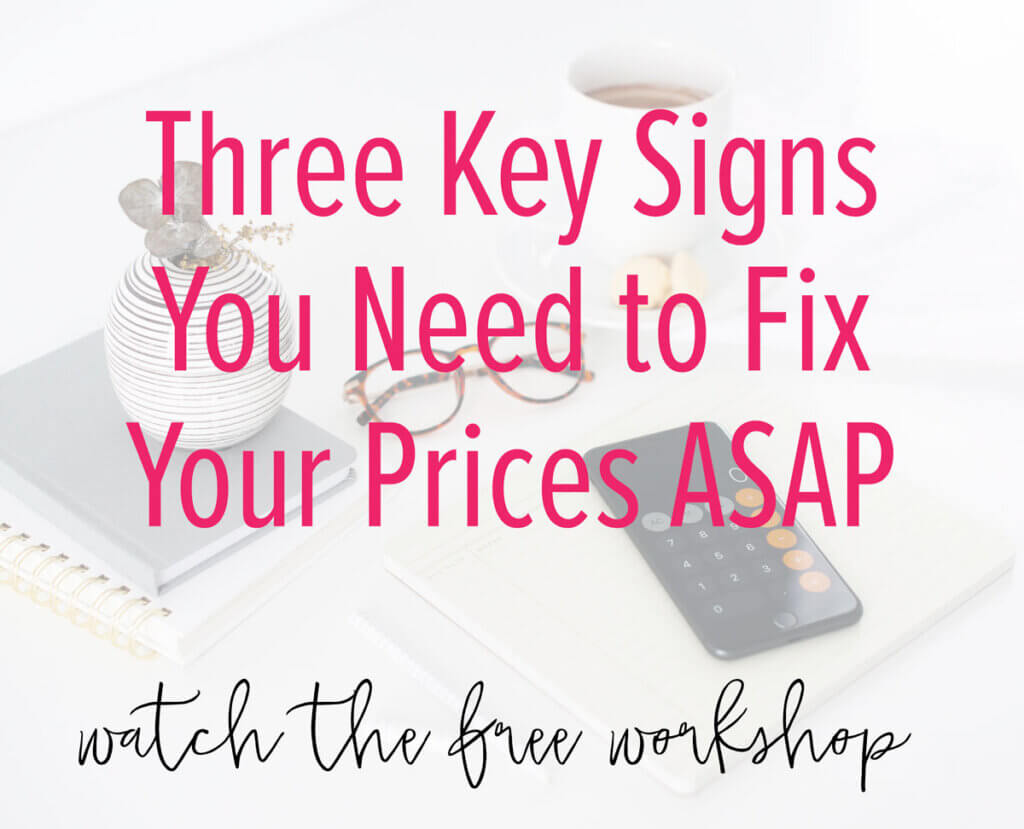

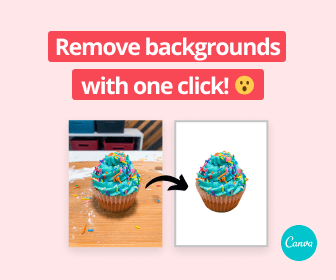



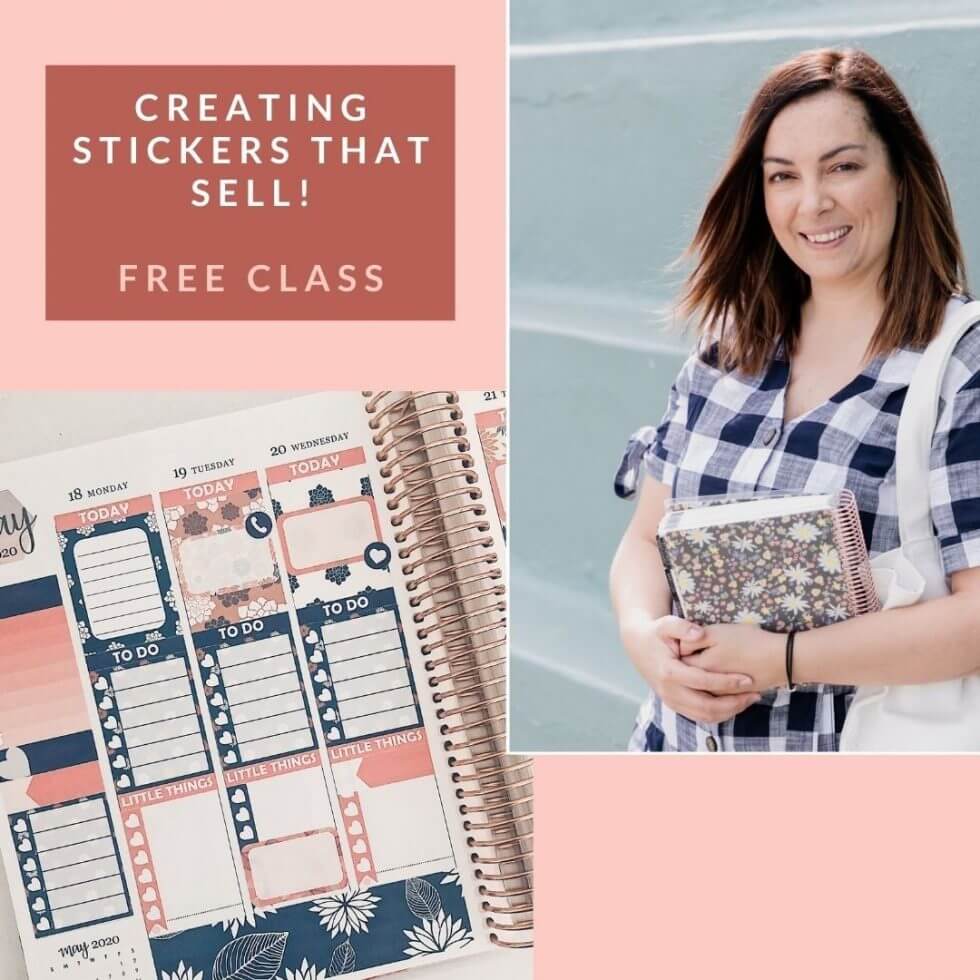
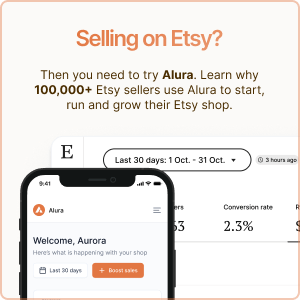

[…] Surviving the year end inventory count […]
[…] idea of your ending inventory for Schedule C. You will just need to confirm this number with a physical count at year end (you may need to adjust for waste, scraps, trash, loss, etc.). You’d also already have a good […]
Ok, so let’s say I make purses, and I have all my supplies for making purses, and that is a part of the inventory. But I decide to create a new type of bag, and I need to make samples. I buy supplies to create these samples (fabric, zippers, etc) and I use some of the same supplies in my inventory (rivets, more fabric). I’m using these supplies with no intention of ever reselling them, because these samples are simply a tool to get to the final product. Are these supplies still considered inventory? Or can I call them business expenses and deduct them?
Great question Madeline. I say either way, it does not matter. If you inventory all those supplies and use them in a purse you use as a display or sample prototype, I’d still say you should deduct the cost of those items. Whether you deduct it as part of COGS or as something like an advertising expense, it all ends up as a deduction.
Hi! I haven’t been the best at keeping track of the cost of my inventory. I make string friendship bracelets so I’m buying lots of small skein floss. I try to buy it on sale so I’m not spending as much, but I know that can make my costs a bit harder to track if I have to buy some at full price. When counting it out, should I track the price of floss at full price, or what I actually paid for it? I base my product costs on the sale price of floss. I’ve heard doing it both ways. Thanks!
Very good overview, !anet! Information succinct, easy to understand with clear photographic support. Thank you!
Where on the batch maker spreadsheet can I log items that were given away for marketing purposes?
I can’t put them in items sold, nor in items taken for personal use…
I have an eco-friendly handmade shop and say I gifted a Zero-Waste Kitchen Bundle to someone, how do I go about categorizing and accounting for something like that? It isn’t “sold” but gifts only can go up to like $20 a year per customer I think, (these bundles are more than that, but supplies are used and I’m brain-fried already with taxes and the sudden increase for my things as I’m still in startup. Haha! Haaaaalp!
Is it truly a gift to a customer? Or a gift to a friend? This may be something that you should consider “personal use” and remove from your business inventory.
Hi Janet,
I’m trying to learn everything I can before stating an etsy shop (jewelry). I have a lot of supplies already because I’ve been making jewelry for friends and family for over 10 years now. I know I can’t really count them as inventory since I’ve had them so long but I’m guessing as I make things and add up the cost of those items (since I’ve kept track of how much the supplies cost me), I can add that as inventory during the year?
As I purchase new supplies (once I’ve started the business), I can list those items as inventory too.
Thanks for sharing so much information. You’ve answered a lot of questions I haven’t been able to get answers for (even going to the SBA). I will be buying your inventory workshop in a few days.
Hi Annie, great question that I get from many makers! We all like to hoard our craft stash right?! It IS OK to add these materials to your inventory & eventually deduct them as cost of goods sold when you sell the pieces you create with them. However there is generally one big caveat – you ideally want to still have your receipt on hand so you can *prove* the cost of those items. So if you have to guess at the cost now, that wouldn’t be good for taxes (you can’t prove the cost to an auditor without some documentation). So if you don’t have receipts, I would enter them in your inventory at $0 cost. So essentially you don’t take a COGS deduction on those items. Let me know if you have questions about that!
Question: We just started in Dec 2020 and you stated that with our first year we put 0 in inventory but how do we calculate inventory that we carried from before we became a business? We sold items with that inventory. Also, i am confused. So we can only deduct inventory that we used in what we actually SOLD, yet we still have to add in a total cost of all of our inventory on those lines 37-41? Which inventory amount do we input? All or what was sold?
Hi Desire! If you still have receipts for those pre-business inventory purchases you can add them to your inventory in year 1 of starting your business. Yes, lines 36-41 are basically how the cost of goods sold deduction is calculated. You’re telling the form everything you bought, and then subtracting out everything that is still LEFT…so the difference is = what sold! That is the only thing that ends up getting deducted.
Hi Desire, here is some info on your first question: https://paperandspark.stonly.com/kb/guide/en/inventory-spreadsheet-faqs-troubleshooting-zzNn06VuBb/Steps/196338,196360,238158
You enter in all your inventory in Part III of the Schedule C – but just in order to solve for Cost of Goods sold, which is what you actually deduct.
I just want to start off by saying that you are currently saving my butt right now. Your website is a godsend. I am eating this all up! It’s making everything much less scary. I do have a question though on inventory that I am struggling with. I am an artist and I have left over blank canvas and some finished paintings from before I became a business. (I became an official sole proprietor in October 2021). How do I account for stuff I purchased before I was a business or stuff I got for free?
Do I count a finished painting ready for sale the same as a blank canvas in my inventory count? For example, if I have 8 unused 8*10 canvas and 4 painted canvases, do I have 12 8*10 canvas in stock? The paints will be captured in what paint ounces I have left, so from a cost perspective, used/unused have the same potential cogs eventually, correct?
Hi janet! Thanks for taking the time to do this. I am left a bit confused tho. You mentioned that drop shippers need to do inventory, but I didn’t catch an explanation on how we would need to count our inventory. I use a print on demand company for fulfillment and enter each item made by them in my “materials” section on the Etsy Seller Spreadsheet. What else would I need to do to complete my inventory count?
You wouldn’t need to do an inventory count, because you don’t have any inventory at year end to count (or at any point of the year really!).
Yes that sounds about right!
[…] Surviving the year end inventory count […]
[…] idea of your ending inventory for Schedule C. You will just need to confirm this number with a physical count at year end (you may need to adjust for waste, scraps, trash, loss, etc.). You’d also already have a good […]
Ok, so let’s say I make purses, and I have all my supplies for making purses, and that is a part of the inventory. But I decide to create a new type of bag, and I need to make samples. I buy supplies to create these samples (fabric, zippers, etc) and I use some of the same supplies in my inventory (rivets, more fabric). I’m using these supplies with no intention of ever reselling them, because these samples are simply a tool to get to the final product. Are these supplies still considered inventory? Or can I call them business expenses and deduct them?
Great question Madeline. I say either way, it does not matter. If you inventory all those supplies and use them in a purse you use as a display or sample prototype, I’d still say you should deduct the cost of those items. Whether you deduct it as part of COGS or as something like an advertising expense, it all ends up as a deduction.
Hi! I haven’t been the best at keeping track of the cost of my inventory. I make string friendship bracelets so I’m buying lots of small skein floss. I try to buy it on sale so I’m not spending as much, but I know that can make my costs a bit harder to track if I have to buy some at full price. When counting it out, should I track the price of floss at full price, or what I actually paid for it? I base my product costs on the sale price of floss. I’ve heard doing it both ways. Thanks!
Very good overview, !anet! Information succinct, easy to understand with clear photographic support. Thank you!
Where on the batch maker spreadsheet can I log items that were given away for marketing purposes?
I can’t put them in items sold, nor in items taken for personal use…
I have an eco-friendly handmade shop and say I gifted a Zero-Waste Kitchen Bundle to someone, how do I go about categorizing and accounting for something like that? It isn’t “sold” but gifts only can go up to like $20 a year per customer I think, (these bundles are more than that, but supplies are used and I’m brain-fried already with taxes and the sudden increase for my things as I’m still in startup. Haha! Haaaaalp!
Is it truly a gift to a customer? Or a gift to a friend? This may be something that you should consider “personal use” and remove from your business inventory.
Hi Janet,
I’m trying to learn everything I can before stating an etsy shop (jewelry). I have a lot of supplies already because I’ve been making jewelry for friends and family for over 10 years now. I know I can’t really count them as inventory since I’ve had them so long but I’m guessing as I make things and add up the cost of those items (since I’ve kept track of how much the supplies cost me), I can add that as inventory during the year?
As I purchase new supplies (once I’ve started the business), I can list those items as inventory too.
Thanks for sharing so much information. You’ve answered a lot of questions I haven’t been able to get answers for (even going to the SBA). I will be buying your inventory workshop in a few days.
Hi Annie, great question that I get from many makers! We all like to hoard our craft stash right?! It IS OK to add these materials to your inventory & eventually deduct them as cost of goods sold when you sell the pieces you create with them. However there is generally one big caveat – you ideally want to still have your receipt on hand so you can *prove* the cost of those items. So if you have to guess at the cost now, that wouldn’t be good for taxes (you can’t prove the cost to an auditor without some documentation). So if you don’t have receipts, I would enter them in your inventory at $0 cost. So essentially you don’t take a COGS deduction on those items. Let me know if you have questions about that!
Question: We just started in Dec 2020 and you stated that with our first year we put 0 in inventory but how do we calculate inventory that we carried from before we became a business? We sold items with that inventory. Also, i am confused. So we can only deduct inventory that we used in what we actually SOLD, yet we still have to add in a total cost of all of our inventory on those lines 37-41? Which inventory amount do we input? All or what was sold?
Hi Desire! If you still have receipts for those pre-business inventory purchases you can add them to your inventory in year 1 of starting your business. Yes, lines 36-41 are basically how the cost of goods sold deduction is calculated. You’re telling the form everything you bought, and then subtracting out everything that is still LEFT…so the difference is = what sold! That is the only thing that ends up getting deducted.
Hi Desire, here is some info on your first question: https://paperandspark.stonly.com/kb/guide/en/inventory-spreadsheet-faqs-troubleshooting-zzNn06VuBb/Steps/196338,196360,238158
You enter in all your inventory in Part III of the Schedule C – but just in order to solve for Cost of Goods sold, which is what you actually deduct.
I just want to start off by saying that you are currently saving my butt right now. Your website is a godsend. I am eating this all up! It’s making everything much less scary. I do have a question though on inventory that I am struggling with. I am an artist and I have left over blank canvas and some finished paintings from before I became a business. (I became an official sole proprietor in October 2021). How do I account for stuff I purchased before I was a business or stuff I got for free?
Do I count a finished painting ready for sale the same as a blank canvas in my inventory count? For example, if I have 8 unused 8*10 canvas and 4 painted canvases, do I have 12 8*10 canvas in stock? The paints will be captured in what paint ounces I have left, so from a cost perspective, used/unused have the same potential cogs eventually, correct?
Hi janet! Thanks for taking the time to do this. I am left a bit confused tho. You mentioned that drop shippers need to do inventory, but I didn’t catch an explanation on how we would need to count our inventory. I use a print on demand company for fulfillment and enter each item made by them in my “materials” section on the Etsy Seller Spreadsheet. What else would I need to do to complete my inventory count?
You wouldn’t need to do an inventory count, because you don’t have any inventory at year end to count (or at any point of the year really!).
Yes that sounds about right!
Thanks for this video! This exactly answered my two big questions about inventory: Do I count both raw materials and finished goods? and Do I count both this year’s and previous years inventory?